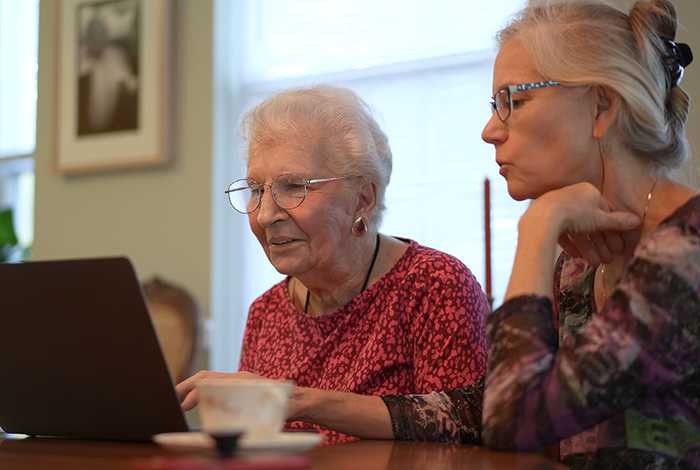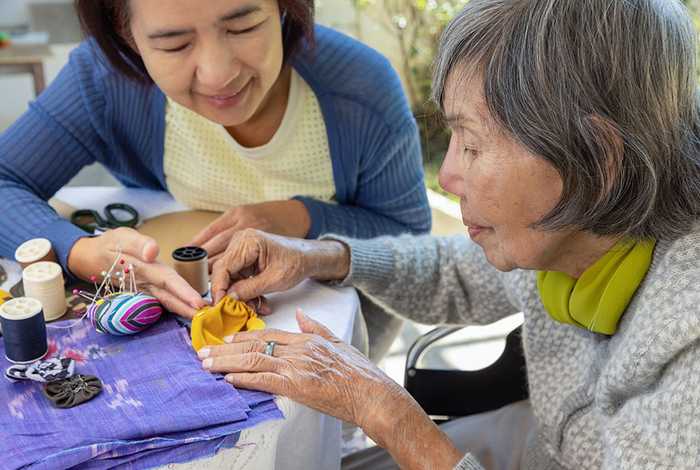Posted by Janine Griffiths
How Discharge to Assess Pathways Reduce Hospital Stays

Few things are more exhausting, physically and emotionally than a stay in hospital.
The unfamiliar sounds, the busy corridors, the constant interruptions. And for older adults, even a short stay can feel like a long way from home. It’s perfectly natural to want to get back to familiar surroundings as soon as it's safe to do so.
That’s exactly what today’s health and care services are working towards: helping people recover in the right place, not just the hospital bed. There's a growing understanding that while hospitals are vital for treatment, they’re not always the best place for rest or rehabilitation.
This is where discharge to assess pathways (sometimes referred to as D2A) comes in. Designed to reduce unnecessary hospital time, these pathways support people to leave once they’re medically stable, with any ongoing care needs assessed afterwards, ideally in a setting that feels more like home than hospital. It’s a more compassionate, realistic approach that puts your wellbeing front and centre.
But the process of discharge into care does not always go to plan. Our research suggests that there is still a disconnect between care providers and hospital teams. Keep reading to find out why.
What are discharge to assess pathways?
Let’s be honest, nobody wants to stay in hospital longer than they have to. Once the urgent medical care is over, most people just want to be somewhere calm, familiar and comfortable. And now, thanks to a more thoughtful and person-centred approach, that’s entirely possible.
Discharge to assess pathways are designed to help people leave hospital when they’re medically ready, without having to wait around for every detail of their future care to be finalised. Instead of carrying out assessments in a hospital bed, these pathways allow professionals to work with you in a more suitable setting - whether that’s your own home or a temporary place that supports your recovery.
How discharge to assess pathways actually work
When you're recovering in hospital, there's often a moment when the doctor says you're medically ready to leave. But that doesn't always mean everything is settled. What happens next? Where do you go, and who decides what kind of care or support you might need?
D2A pathways are carefully structured routes that help move people out of hospital safely, so assessments about ongoing care can happen in a better environment, one that supports real recovery. Here’s how it works.
Once you’re deemed well enough to leave hospital, the care team looks at your needs and places you on one of four pathways. Pathway 0 is the simplest: you go straight home with no extra support needed. Pathway 1 is for those who may need a little help at home things like reablement support, home care or adaptations.
For more complex situations, there’s Pathway 2, which involves a short stay in a residential or community-bedded care setting so a full assessment can be made in a safe, supported environment. And then there’s Pathway 3, for people who have significant ongoing or complex care needs and may require a longer-term plan.
For more details on these pathways, check out our blog, ‘What is Discharge to Assess?’
Does the hospital discharge process always go smoothly?
In short: no.
One of the most common challenges with hospital discharge processes is a disconnect between care providers and hospital discharge teams.
In fact, our research showed that 48.7% of care providers do not feel the hospital discharge teams understand the care they offer and 45.5% of care providers say information provided by hospital discharge teams is not accurate.
A further 44.6% of providers think the information provided by hospital discharge teams is insufficient to decide whether a placement is suitable.
Other care providers cited problems with contacting hospital teams (34%) and a further 33.4% said they are unable to contact hospital teams when they need to.
While these figures are certainly very worrying, the real cost is a human one. It could be the emotional toll on a family left waiting by the phone, desperate for news. It could be grandma who is ready to leave hospital but left in limbo, unsure of what’s happening, surrounded by strangers, longing for the comfort of her own bed. It might be a son or daughter trying to advocate for a parent with no clear answers, or care providers left scrambling to fill in the gaps, risking delays or inappropriate placements.
The truth is, when discharge processes break down, it’s not just a logistical problem. It’s people who suffer. People who miss the chance to recover in a setting that feels safe. People who lose precious confidence, mobility or peace of mind with each passing day in hospital. These moments matter. While discharge to assess pathways are designed to make things smoother, they can only work when communication is clear, trust is built, and everyone involved is truly working together. The truth is that behind every delayed discharge is a person who simply wants to move forward.
With all of these challenges, can D2A reduce hospital stays?
It’s a fair question.
When communication breaks down, care teams feel unheard, and families are left feeling lost in the process, can anything really make a difference?
The answer is yes. Discharge to assess pathways have been introduced for a reason: to create smoother, more compassionate transitions out of hospital. And even with the hurdles, they’re already helping to reduce the time people spend in hospital beds when they don’t need to be there. But for these pathways to truly succeed, the system around them needs to work better not just in theory, but in practice.
It’s not just about ticking boxes or moving people through a system. It’s about human lives and helping someone get back to familiar surroundings, regain their independence, and feel like themselves again. When discharge to assess pathways are properly supported with good communication and shared understanding between services, they absolutely can reduce hospital stays. More importantly, they can improve recovery and restore dignity.
The good news is that Autumna has developed pioneering tools that can make the entire process go a lot more smoothly for both hospital teams and their elderly patients.
The first tool is our shortlisting tool. This tool allows you to get matched with suitable care providers within minutes. Although our platform allows you to search care providers based on your location and requirements, our shortlisting tool does all the hard work for you. All you have to do is answer a few quick questions, and then let the system do its magic. It definitely beats potential delays with getting stuck in the hospital.
Furthermore, our DAD (Dashboard for Accelerated Discharge) tool can help discharge and brokerage teams identify suitable care providers in an hour or less.
Together, these tools are helping to close the communication gaps that so often slow things down. By giving families and hospital teams access to clearer information and faster matches, Autumna is making discharge to assess pathways not just possible but truly effective.
The impact: Less time in hospital, more time focused on recovery
There’s something powerful about being in the right environment when you’re healing. The quiet of your own space. The rhythm of your daily routine returning. The reassurance of familiar faces around you. That’s why discharge to assess is more than just a practical approach, it’s a compassionate one.
By moving assessments out of the hospital and into settings that feel more personal, discharge to assess allows people to leave sooner without compromising on care. In fact, it often leads to better decisions. When you're at home or in a more comfortable space, it’s easier for professionals to see what you truly need, and easier for you and your family to have a voice in those choices.
So don’t be afraid to speak up and ask the hospital team about discharge to assess and what it means for you or your loved one. Ask when the discharge is likely to happen, where the assessment will take place, and what support will be in place once you leave. These aren’t just practical questions; they're vital to feeling in control at a time that can otherwise feel overwhelming.
You have every right to be part of the decision-making, and to make sure that the next step in your recovery is the right one. These conversations can make a real difference, not just to how quickly you leave hospital, but to how confidently you step into the next stage of care. This is about more than process. It’s about your independence and your peace of mind.
Want to talk through your options?
Making care decisions can feel overwhelming, but you don’t have to do it alone. At Autumna, our compassionate team is here to guide you every step of the way. Contact us today on 01892 335 330.
Receive a Free Care Provider Shortlist!
Let our expert team of advisers get your search off to a great start.
Tell us a little about your needs and we'll send you a bespoke shortlist of care providers! Click the button below to begin, it takes just a few minutes.
Other articles to read
From the blog

Older Persons Care Advice
Ultimate guide to jointly owned property and care home fees
September 26th, 2025
Understand jointly owned property and care home fees, how assessments work, and steps to protect your finances and plan ahead with confidence.

Older Persons Care Advice
What are the pros and cons of care homes?
September 26th, 2025
Weigh the pros and cons of care homes to make the right choice for you or a loved one. Discover benefits, challenges, and tips for finding the best fit.

Older Persons Care Advice
Person centred care and dementia: A guide for families
September 23rd, 2025
Discover how person centred care and dementia support go hand in hand. Learn practical tips, expert insight, and guidance for families seeking the best care.
Frequently Asked Questions
Yes, you have the right to be involved in decisions about your discharge and care. If you're unsure or uncomfortable with the plan, speak to the discharge team and ask for a reassessment or further discussion. The goal should always be a care setting that suits the needs of yourself or a loved one and feels safe.
If you're on a discharge to assess pathway and going home, the care team should arrange any essential equipment (like grab rails or walking aids) before you leave. In some cases, a temporary care setting may be offered until your home is made safe and accessible.
Yes, your GP should be updated after discharge so they can continue to support your care in the community. It’s also a good idea to follow up with them yourself or with help from a family member to ensure nothing gets missed in the transition.
This varies depending on local capacity, but the assessment is meant to happen soon after discharge typically within a few days. The idea is to observe your needs in a real-world setting and make decisions based on how you're managing at home or in temporary care, rather than just in a hospital environment.






